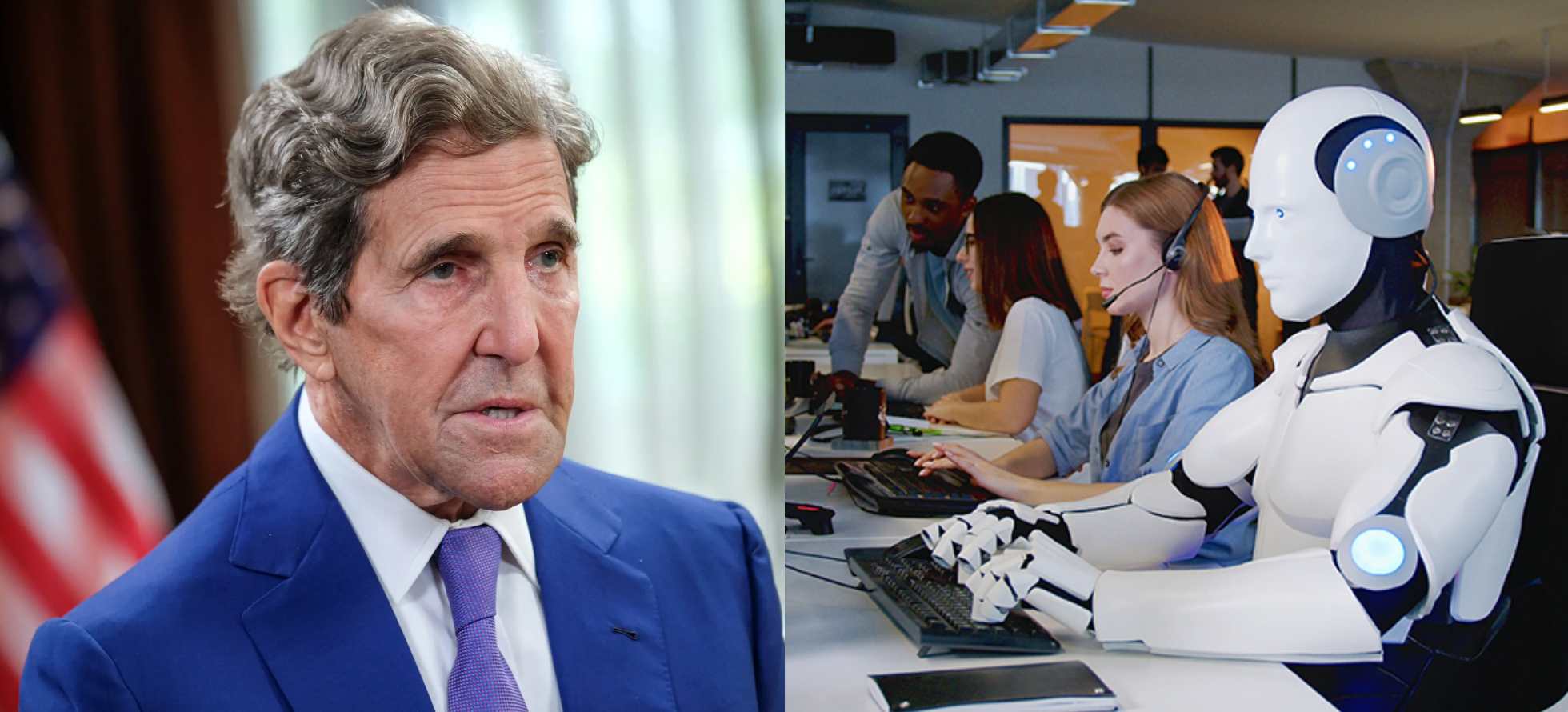The artificial intelligence revolution is crashing into America’s white-collar workforce with stunning velocity, and the collision could reshape the economic landscape within just a few years.
Former Secretary of State John Kerry recently offered a blunt assessment of what’s coming in a recent interview: “AI is going to change everything, everything about everything,” he said. “White-collar jobs in America will diminish before a lot of other kinds of jobs. You don’t need code writers as much anymore. Codes are going to be written by the other AI models.”
Kerry’s warning echoes increasingly urgent alarms from the heart of Silicon Valley itself. Dario Amodei, CEO of Anthropic—the AI company now valued at $183 billion—has painted one of the starkest pictures yet of the looming disruption.
Without meaningful intervention, Amodei predicts AI could eliminate half of all entry-level white-collar positions and drive unemployment to between 10% and 20% within the next one to five years.
“If we look at entry-level consultants, lawyers, financial professionals, you know, many of kind of the white collar service industries, a lot of what they do, you know, AI models are already quite good at,” Amodei explained in a recent interview. “Without intervention, it’s hard to imagine that there won’t be some significant job impact there. And my worry is that it’ll be broad and it’ll be faster than what we’ve seen with previous technology.”
This isn’t theoretical speculation. Inside Anthropic’s own operations, the future is already unfolding at remarkable speed. The company’s AI system, Claude, is now writing approximately 90% of Anthropic’s codebase.
The technology has moved beyond simply assisting workers to replacing entire workflows—from customer service operations to analyzing complex medical research. Jobs that once required advanced degrees, professional credentials, and years of experience are being absorbed by algorithms.
“It is an experiment,” Amodei acknowledged. “And one way to think about Anthropic is that it’s a little bit trying to put bumpers or guard rails on that experiment.”
He continued: “We do know that this is coming incredibly quickly. And I think the worst version of outcomes would be we knew there was going to be this incredible transformation. And people didn’t have enough of an opportunity to adapt.”
The potential consequences extend far beyond temporary job losses. The collapse of entry-level professional positions threatens to eliminate the traditional pathways through which young workers enter careers and build expertise. If junior roles in law firms, consulting companies, and financial institutions vanish, an entire generation could find itself locked out of professional mobility altogether.
Yet despite these mounting warnings, the federal government has not passed a single law requiring AI safety testing or establishing frameworks for economic preparedness.
When asked who’s responsible for managing this transformation, Amodei’s answer was sobering: “No one. No one. Honestly, no one. And this is one reason why I’ve always advocated for responsible and thoughtful regulation of the technology.”
Instead, the trajectory of AI development is being shaped primarily by a small circle of technology executives, even as they themselves acknowledge the risks. The situation has become further complicated by political tensions. The Trump administration has placed Anthropic under scrutiny due to its early funding connections to Effective Altruism, a philosophical movement that critics describe as doom-focused and ideologically driven.
Although Amodei insists neither he nor Anthropic identify with the movement, the company’s origins involve major donors associated with it, including Sam Bankman-Fried and Dustin Moskovitz.
The bankruptcy estate of Bankman-Fried’s collapsed FTX exchange sold its Anthropic stake for $884 million, with much of it reportedly ending up in the UAE. These connections have made the company a focal point for administration officials who view it as potentially more aligned with Democratic policy priorities than national interests.
The White House has pushed for a decade-long freeze on state-level AI laws to prevent a fragmented regulatory landscape. Anthropic opposed this freeze and later supported comprehensive AI legislation in California. Trump’s AI czar, David Sacks, has accused the company of using fear tactics to influence regulation, while Anthropic maintains the administration is being reckless about existential risks.
Beyond the regulatory battles, Kerry’s remarks point to another dimension of the AI transformation: energy infrastructure. He noted that his investments include a company developing virtual power plants that use software to manage energy distribution more efficiently. “Do that, folks, and you don’t have to build the next combined-cycle gas-fired power plant,” Kerry said.
The energy angle is critical because AI data centers require massive amounts of power. Currently, there’s a four-to-five-year waiting period to obtain combined-cycle gas turbines needed for new power plants. For companies racing to deploy AI systems—particularly in competition with China—this timeline is unacceptable.
“If you want to build your AI center and get it up and going, it’s going to be competitive in the next year or two, which people want to do to win against China. But you’ve got all those NVIDIA chips sitting around. You can’t have them. Three years are worthless, right?” Kerry explained.
His solution emphasizes renewable energy sources, which he argues can be deployed faster than traditional power generation. “Speed to power,” as industry insiders call it, may become as crucial as the AI technology itself.
The paradox is difficult to ignore: Anthropic continues expanding its AI capabilities at an extraordinary pace even as its CEO warns these same systems could devastate the job market. The company maintains it wants appropriate regulation and safety measures, yet the technology’s commercial momentum shows no signs of slowing.


